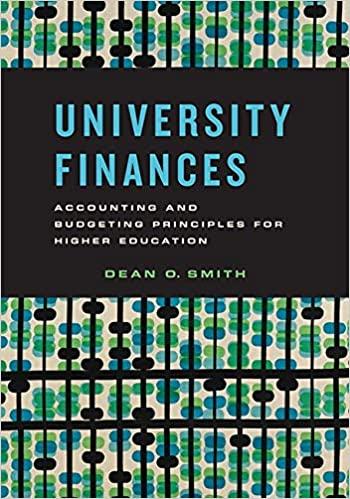Question
You recently graduated from college, and your job search led you to East Coast Yachts. Because you felt the company's business was seaworthy, you accepted
You recently graduated from college, and your job search led you to East Coast Yachts. Because you felt the company's business was seaworthy, you accepted a job offer. On the first day on the job, while you are finishing your employment paperwork, Dan Ervin, who works in Finance, stops by to inform you about the company's 401(k) plan. Such plans are tax-deferred savings vehicles, meaning that any deposits you make into the plan are deducted from your current pretax income, so no current taxes are paid on the money. For example, assume your salary will be $50,000 per year. If you contribute $3,000 to the 401(k) plan, you will pay taxes on only $47,000 in income. There are also no taxes paid on any capital gains or income while you are invested in the plan, but you do pay taxes when you withdraw money at retirement. As is fairly common, the company also has a 5 percent match. This means that the company will match your contribution up to 5 percent of your salary, but you must contribute to get the match.
The 401(k) plan has several options for investments, most of which are mutual funds. A mutual fund is a portfolio of assets. When you purchase shares in a mutual fund, you are actually purchasing partial ownership of the fund's assets. The return of the fund is the weighted average of the return of the assets owned by the fund, minus any expenses. The largest expense is typically the management fee, paid to the fund manager. The management fee is compensation for the manager, who makes all of the investment decisions for the fund. East Coast Yachts uses Bledsoe Financial Services as its 401(k) plan administrator. Here are the investment options offered for employees:
Company Stock
One option in the 401(k) plan is stock in East Coast Yachts. The company is currently privately held. However, when you interviewed with the owner, Larissa Warren, she informed you the company was expected to go public in the next three to four years. Until then, a company stock price is simply set each year by the board of directors.
Bledsoe S&P 500 Index Fund
This mutual fund tracks the S&P 500. Stocks in the fund are weighted exactly the same as the S&P 500. This means the fund return is approximately the return on the S&P 500, minus expenses. Because an index fund purchases assets based on the composition of the index it is following, the fund manager is not required to research stocks and make investment decisions. The result is that the fund expenses are usually low. The Bledsoe S&P 500 Index Fund charges expenses of .15 percent of assets per year.
Bledsoe Small-Cap Fund
This fund primarily invests in small-capitalization stocks. As such, the returns of the fund are more volatile. The fund can also invest 10 percent of its assets in companies based outside the United States. This fund charges 1.70 percent in expenses.
Bledsoe Large-Company Stock Fund
This fund invests primarily in large-capitalization stocks of companies based in the United States. The fund is managed by Evan Bledsoe and has outperformed the market in six of the last eight years. The fund charges 1.50 percent in expenses.
Bledsoe Bond Fund
This fund invests in long-term corporate bonds issued by U.S. yachts domiciled companies. The fund is restricted to investments in bonds with an investment-grade credit rating. This fund charges 1.40 percent in expenses.
Bledsoe Money Market Fund
This fund invests in short-term, high credit quality debt instruments, which include Treasury bills. As such, the return on the money market fund is only slightly higher than the return on Treasury bills. Because of the credit quality and short-term nature of the investments, there is only a very slight risk of negative return. The fund charges .60 percent in expenses.
1. What advantages do the mutual funds offer compared to the company stock?
2. Assume that you invest 5 percent of your salary and receive the full 5 percent match from East Coast Yachts. What EAR do you earn from the match? What conclusions do you draw about matching plans?
3. Assume you decide you should invest at least part of your money in large-capitalization stocks of companies based in the United States. What are the advantages and disadvantages of choosing the Bledsoe Large-Company Stock Fund compared to the Bledsoe S&P 500 Index Fund?
4. The returns on the Bledsoe Small-Cap Fund are the most volatile of all the mutual funds offered in the 401(k) plan. Why would you ever want to invest in this fund? When you examine the expenses of the mutual funds, you will notice that this fund also has the highest expenses. Does this affect your decision to invest in this fund?
6. Which portfolio allocation would you choose and why?
Step by Step Solution
There are 3 Steps involved in it
Step: 1

Get Instant Access to Expert-Tailored Solutions
See step-by-step solutions with expert insights and AI powered tools for academic success
Step: 2

Step: 3

Ace Your Homework with AI
Get the answers you need in no time with our AI-driven, step-by-step assistance
Get Started


